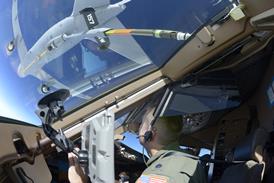Graham Warwick/WASHINGTON DC
US Air Force commanders have endorsed the requirement for a gun in the Joint Strike Fighter (JSF), but the issue of whether it will be integrated into the airframe is still open. That question is expected to be resolved when the latest iteration of the joint initial requirement document (JIRD) is released later this year.
The four services involved in drawing up the requirements for the JSF have differing views on the need for a gun. While USAF commanders meeting in May "-all agreed a gun is required", according to Harry Disbrow, deputy director, operations requirements, the other services are concerned about the cost and weight.
Trade studies are under way to determine the cost and weight implications of an integrated gun. "A good way to tell how much you love something is to see the cost," notes Rear Adm Dennis McGinn, US Navy director, air warfare. The Navy does not have a requirement for a gun and is concerned about the "scar weight" associated with the structural and other provisions which are required for an integrated weapon.
The US Marine Corps, concerned about adding weight to its short take-off and vertical landing (STOVL) variant of the JSF, has expressed interest in a strap-on gun for some missions. "We have talked about the need for a gun-but it comes down to trades," says deputy chief of staff for aviation Lt Gen Terrence Dake, adding: "We're interested - if it gives us the opportunity to configure the aircraft."
The two JSF teams say their current designs provide space for an internal gun, but none of the structural, power and other provisions required. One unresolved issue is the calibre of gun required, with the air force accepting that its current 20mm gun is not adequate, while the A-10's 30mm gun would be too large. Development of an advanced 25mm gun has been proposed, but would be expensive.
Speaking at the American Helicopter Society's Joint Strike Fighter '98 conference in Washington DC on 21 May, the service chiefs acknowledged that the issue of the JSF's design bombload has yet to be resolved.
McGinn said that the Navy "-has not backed off" on its requirement to carry two 900kg weapons internally, while the other US services would prefer to have smaller, higher yield munitions.
Source: Flight International























